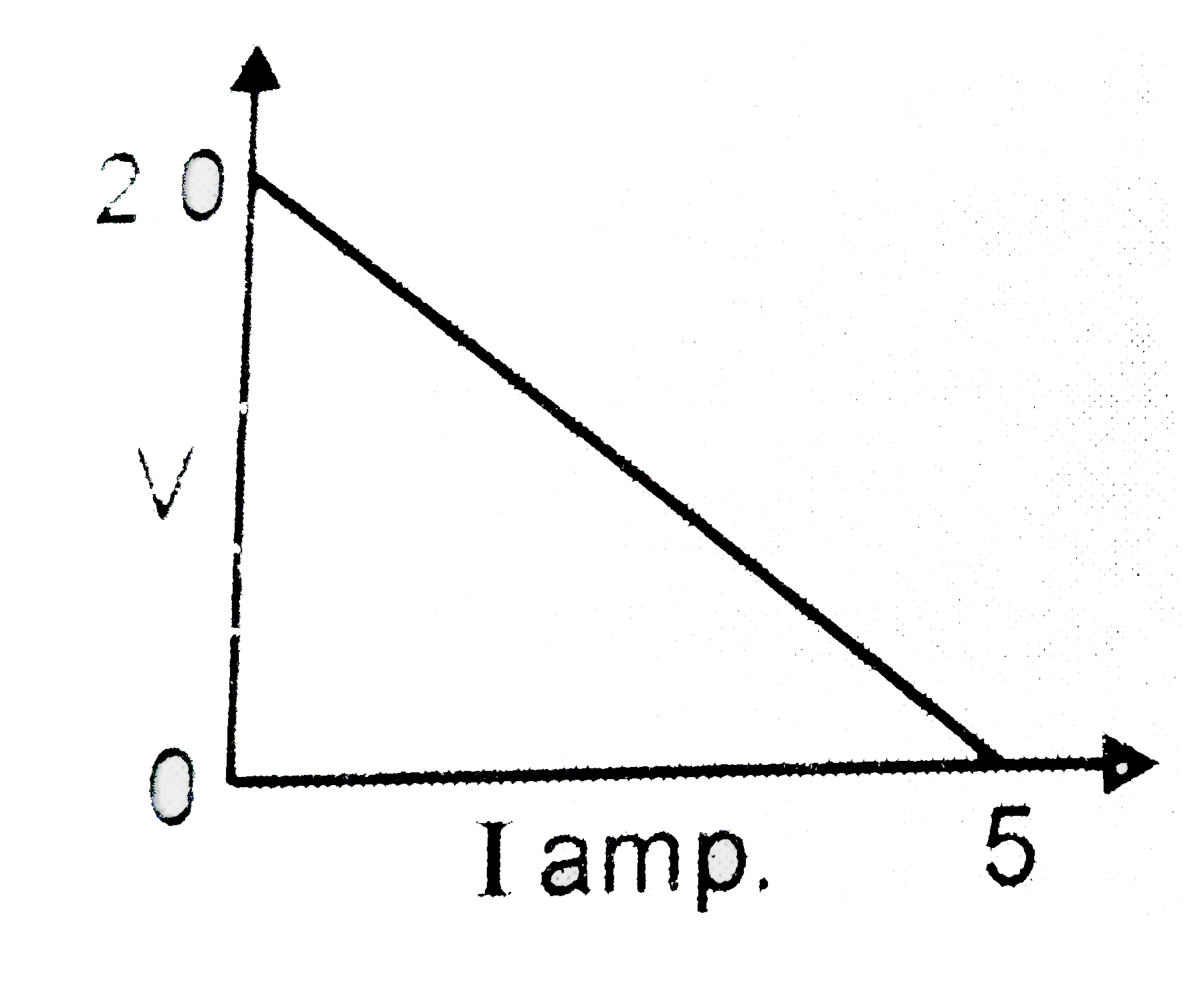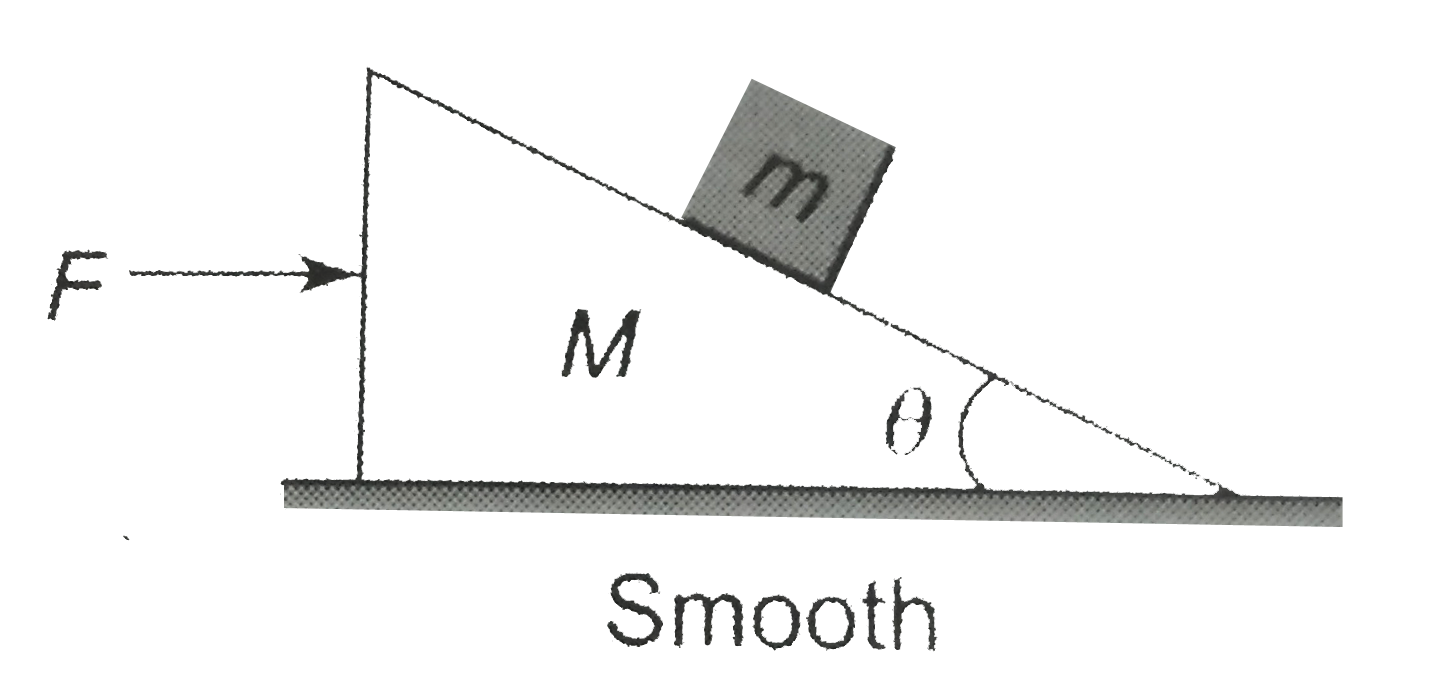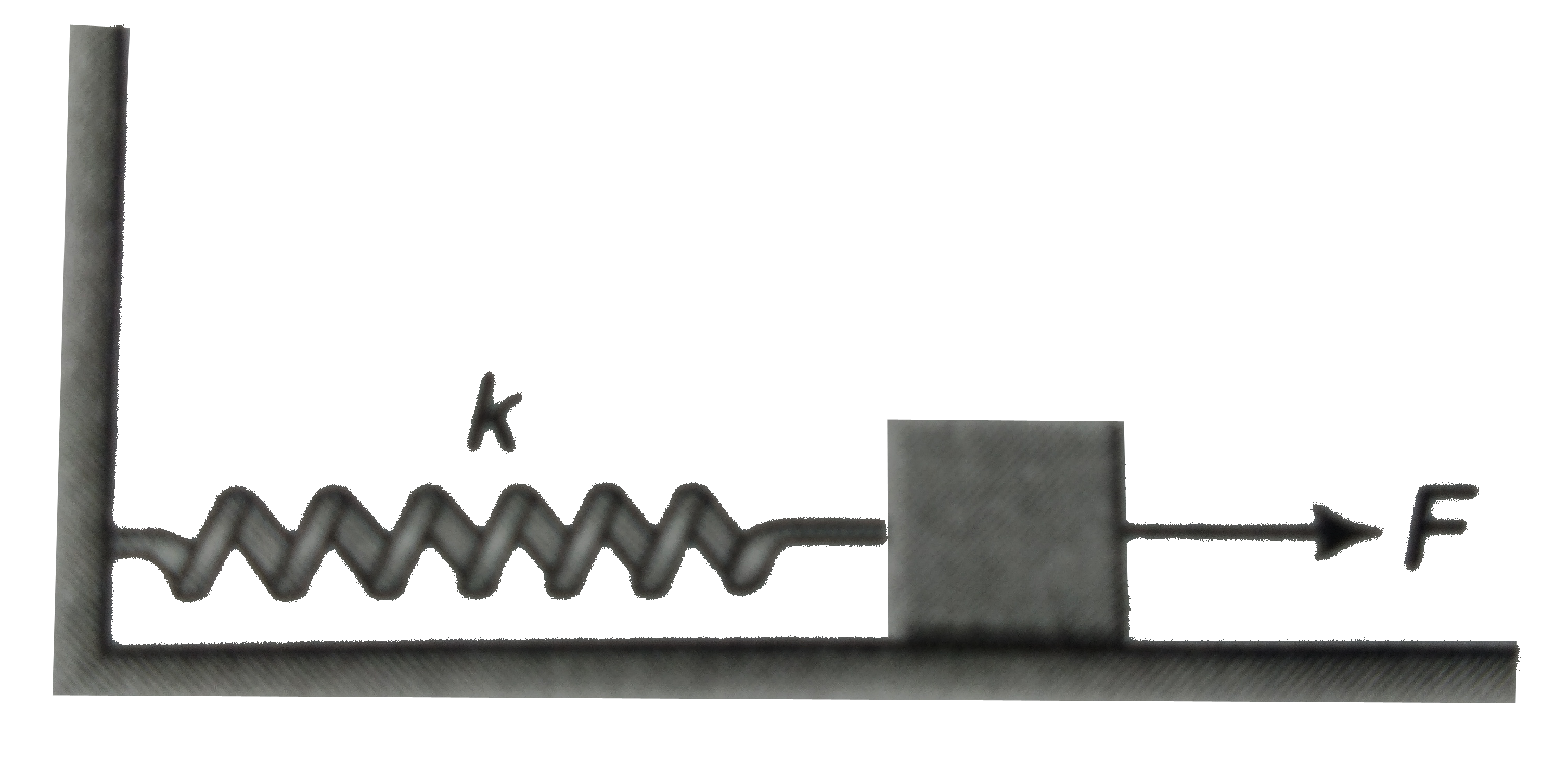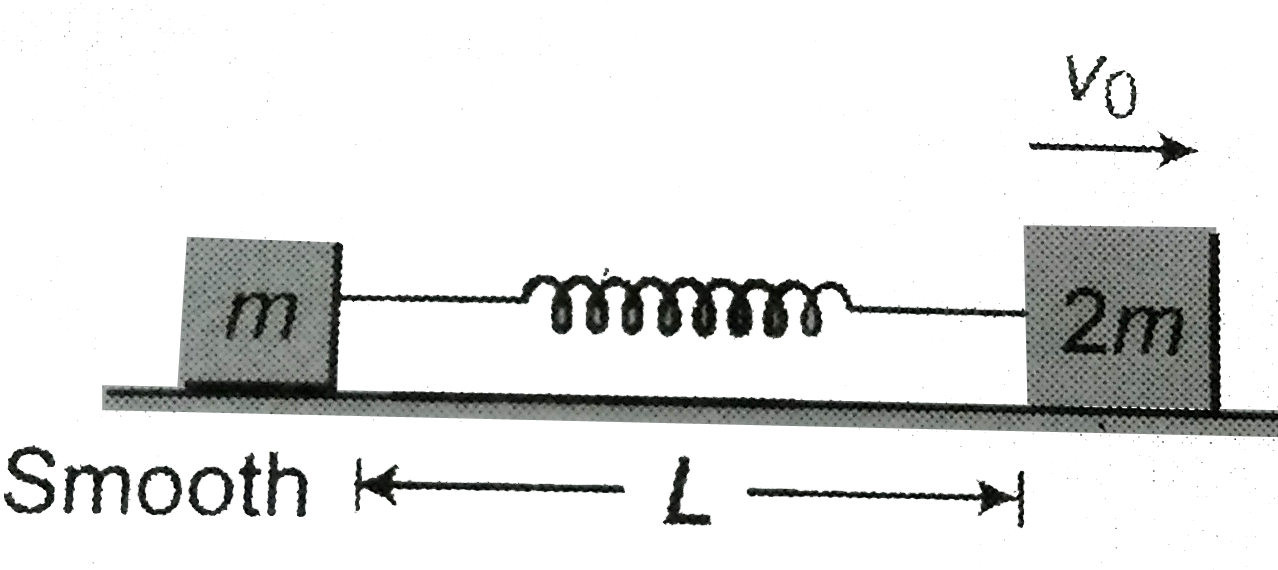Cionsider the situation of the previous problem. Suppose each of tbe blocks is pulled by a constant foerce F instead of any impulse. Find the maximum elongation that the spring will suffer and the distancews moved by the two blocks in the process.
The correct Answer is:A, B
If both blocks are pulled by some force they suddenly move with some acceleration and instntaneously stop at same positioin where the elongation of sprin is maximum.
→x1,x2→ extansion by block m−1andm2
Total work doen =Fx1+Fx2......i
∴ Inccreases the potential energy of spring
=1(12)K(x1+x2)2..........2
Equating 1 and 2
F(x1+x2)(12)K(x1+x2_)2
F(x1+x2)=(12)K(x+x2)2 ltbr> →(x1+x2)=(2Fk)
Since the net exterN/Al force on the two blocks is zero ths same force acts on oppostie directions
∴m1x1=m2x2 .......3
and x1+x2=2Fk
∴x2=m1m2x1
Substitu∈gm1m2x1+x1=2Fk
→x1(1+m1m2)=2Fk
x1=2Fm2k(m1+m2)
x2=2Fm1k(m1+m2)
Topper's Solved these Questions
- CENTRE OF MASS, LINEAR MOMENTUM, COLLISIONBOOK - HC VERMACHAPTER - CENTRE OF MASS, LINEAR MOMENTUM, COLLISIONEXERCISE - Objective 2
11 Videos
- CALORIMETRYBOOK - HC VERMACHAPTER - CALORIMETRYEXERCISE - Exercises
18 Videos
- CIRCULAR MOTIONBOOK - HC VERMACHAPTER - CIRCULAR MOTIONEXERCISE - Exercises
30 Videos
Similar Questions
consider the situastion of the previous problem. Suppose the block of mass m1 is pulled by a constant force F1 and the other block is pulled by a constant force F2. Find the maximum elongation that the spring will suffer.
View SolutionAt t=0, a constant force is applied on 3kg block. Find out maximum elongation in spring in cm.

View Solution
Knowledge Check
For shown situation find the maximum elongation in the spring. Neglect friction everywhere. Initiallthe blocks are at rest and spring is unstreched.
 A4F3KB3F4KC4FKD2FK
A4F3KB3F4KC4FKD2FK
Two blocks of masses m, and m, are connected to the ends of a spring of spring constant k. System is kept at rest on a frictionless horizontal floor with spring in its natural length. Both the blocks are pulled along opposite directions with forces of same magnitude F. Calculate maximum elongation of spring and distances travelled by the blocks during this motion.
View SolutionThe block of mass m is released when the spring was in its natrual length. Spring constant is k. Find the maximum elongation of the spring.

View SolutionInitially block shown is at rest and the spring is unstretched, when a constant force F begins to act on it neglect friction. Find

maximum extension in the spring
View SolutionConsider the situation shown in the figure . The coefficient of friction between the blocks is μ. Find the minimum and the maximum force F that can be applied so that two blocks move together.

View SolutionTwo blocks of mass m1andm2 are connected by a spring of force constant k. Block of mass m1 os pulled by a constant force f2 [see fig 4E.19 (a)] find the maximum elongation in the spring .

View SolutionThe spring shown in figure is unstretched when a man starts pulling on the cord. The mass of the block is M. If the man exerts a constant force F, find

(a) the amplitude and the time period of the motion of the block,
(b) the energy stored in the spring when the block passes through the equilibrium position and
(c) the kinetic energy of the block at this position.
View SolutionBlock of mass 2m is given v0 towards the right. If L is the natural length of spring constant k, find the maximum elongation of the spring.

View Solution
